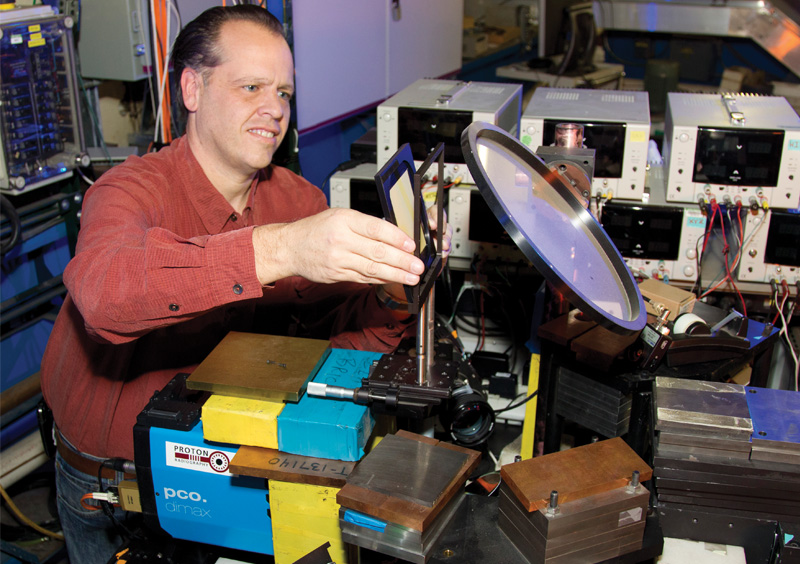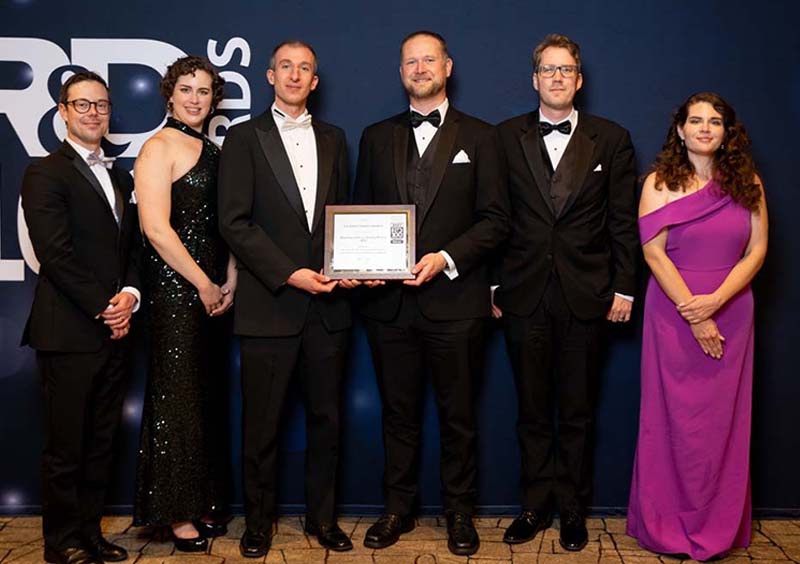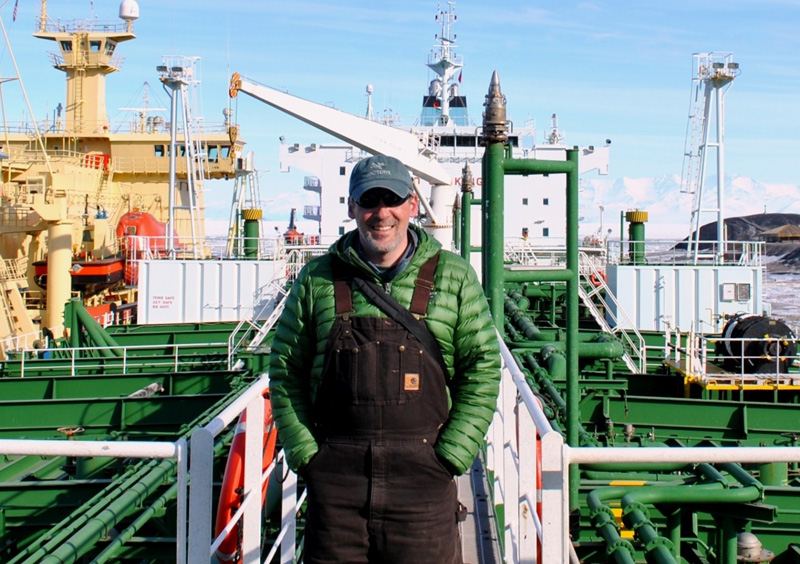The Los Alamos Neutron Science Center (LANSCE) was physicist Frank Merrill's gateway into the dynamic imaging world, where scientists study the properties and behavior of materials driven by high explosives.
There, he witnessed the very beginning of the Lab's effort to develop proton radiography (or pRad) as a new diagnostic technique for stewarding of the nation's stockpiled nuclear weapons using science instead of underground testing. Invented in 1995 at Los Alamos, this method uses high-energy protons from the LANSCE accelerator facility to directly probe and create scientific movies of materials in motion.
"I got hooked on dynamic imaging by watching the experimentation and the work that they were doing with proton radiography," says Frank, who was working at LANSCE by 1995. "The science that can be learned through the stop-action study of fast-moving material is amazing and important to the understanding of materials in weapons systems."
Today, pRad's dynamic imaging capabilities offer critical advantages for materials research in support of stockpile stewardship and basic science research. The detailed, time-dependent data generated can reveal variations in different batches of a high explosive, the physics of detonation including failure, the effect of a material imperfection, the strength of a metal or some other property of materials under extreme conditions.
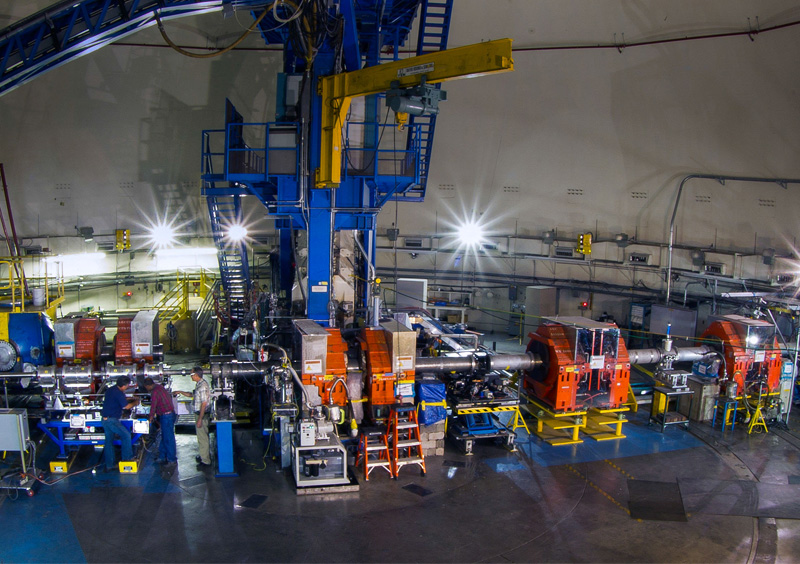
LANSCE is home to the pRad user facility, where scientists can perform experiments. A lot can happen in microseconds, and that can be captured with the quickly turned on and off proton beam at LANSCE and high-speed cameras.
"We make radiographs much quicker than needs to be made in the medical world. We look at things on the microsecond time scale as opposed to the second time scale," Frank says. "It's about a million times faster so that we can understand how things are working at the fastest time scales that Los Alamos is interested in."
Frank spent nearly a decade at the Proton Radiography Facility at LANSCE as pRad team leader and lead experimenter for more than 500 pRad experiments from 2001 through 2010. In this story, he shares a discovery that made pRad into the indispensable workhorse it is today.
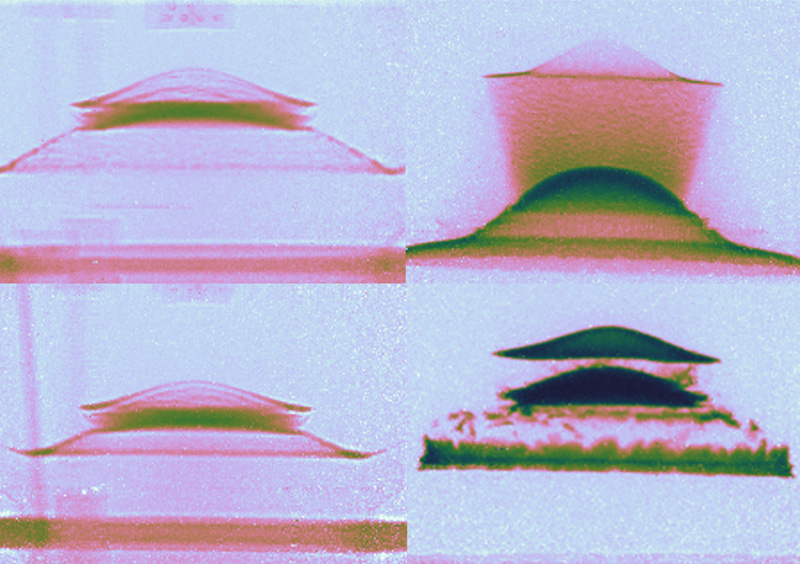
Blurry images cause frustration
Around 2005, Frank was the physicist in charge of executing a series of classified hydrodynamic experiments, which involved running diagnostic tests on explosive assemblies for nuclear weapons. The first results were interesting, but blurry images underscored the need for a better proton radiography measurement capability.
This is when the pRad team, including Frank, decided to create magnified images of the objects being radiographed and improve spatial resolution. But how? Although there had been a previous effort at LANSCE, it had been too cumbersome. Coming up with something more practical was the driving force behind their new magnifier design.
Frank and his team focused on designing and making the magnification system and imaging the test article, while experts from the Lab's X division and the Atomic Weapons Establishment research facility in the United Kingdom ran simulations of the hydrotests. Together, they achieved three times magnification with sharper resolution, a remarkable difference that uncovered crucial details.
"We were able to take the proton radiography and magnify the images so that we could get the information that was needed from this series of experiments," Frank says.
Once this new capability was demonstrated, many other experiments were conceived and executed at pRad to take advantage of the 50-micrometer resolution. (In contrast, the resolution of the first proton radiography system at LANSCE was 200 micrometers.) The new capability became a standard of the proton radiography technique and has been used for hundreds of experiments. The resolution advantage will be used for upcoming plutonium experiments planned at LANSCE.

Designing a magnification system
Solving the magnification challenge wasn't as simple as attaching a magnifying lens or microscope to the experimental platform at LANSCE.
Frank explains the steps: First, a quadrupole magnet magnifier system needed to be designed and fabricated to control the proton beam after it passed through the dynamic object. Once fabricated, this system needed to be accurately placed in position in the proton radiography experimental area and a first-of-its-kind tuning procedure needed to be developed to fine tune the location of this new imaging system once it was paired with the 800 million electron volt (MeV) proton beam provided by the LANSCE linear accelerator.
The proton beam had to be handled with extreme accuracy — as in 50 millionths of a meter — which required the placement of magnets to one ten-thousandth of a meter.
"This required perseverance and patience as there were plenty of hiccups designing, fabricating and then commissioning the new magnet system," Frank recalls.
Two teams were formed to tackle the challenge. One, led by physicist Fesseha Mariam, was building a model to understand how things work from a computer simulation perspective. The other team was trying to make things work for a more hands-on series of physics experiments.
"Frank is very insightful, and he is a good scientific leader, for sure," says Fesseha, who was a new hire at the time and considers Frank a mentor. "He allows you to make your own mistakes and learn from them."
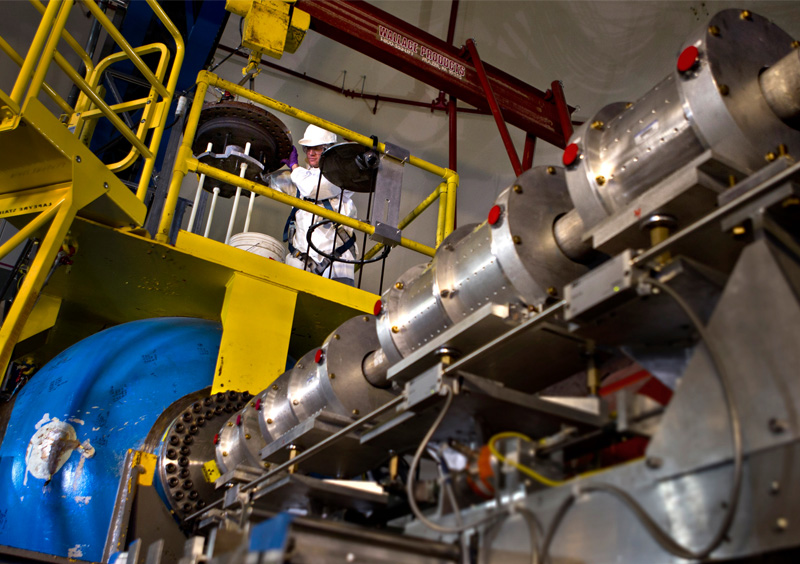
After the custom-built permanent magnets arrived and the system was set up, the teams worked for about a month, running computer simulations to guide measurements with the LANSCE beam to achieve the proper positioning of the magnet system and provide the required level of accuracy.
Los Alamos scientists published a paper about their magnifying lens for proton radiography in the journal Review of Scientific Instruments. Their model showed the X3 magnifier system connected to a high-explosive containment system. Cylindrical magnets were mounted on remotely positioned stands.
From then on, executing experiments in front of a magnifier became the mainstay of the Lab's proton radiography capability. But that's not the end of the story.
Moving from explosives to plutonium
According to Fesseha, a member of the pRad team today, Frank's early magnification work served as an important blueprint.
The original system was cost effective and required no electricity. However, it wasn't a sustainable solution because the magnets slowly deteriorated from radiation scattered into the permanent magnet material. Every few years, they required re-magnetization, but the full process meant taking the system apart and retesting everything after the system was reassembled.
Demand for magnification imaging increased over the years, so in 2016, the technique switched to electromagnets that are more reliable and don't suffer radiation damage, Fesseha says.
The original magnification system was used to study plutonium samples driven by high explosives in 2007 and now, experiments for a new capability known as Pu@pRad at the Proton Radiography Facility will require the electromagnet X3 magnification for a series of classified experiments to study plutonium. The resumption of plutonium operations at pRad is expected during the 2025 LANSCE run cycle.
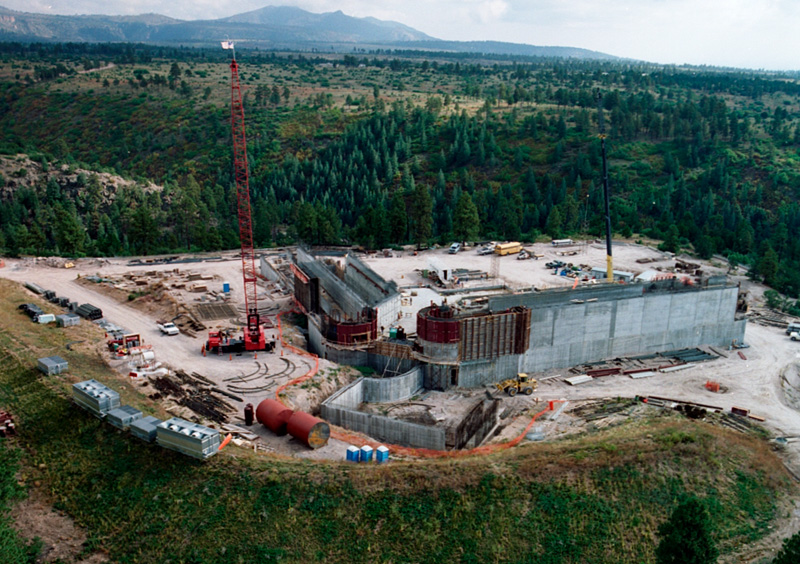
Full circle
Whether the Nuclear Security Enterprise needs a measurement by focusing on a fundamental process — such as how explosives evolve, or through the study of an entire weapon mockup — dynamic imaging experiments are essential in providing these measurements and underwriting the nuclear deterrent.
Throughout his career, Frank has helped develop advanced imaging systems through construction at the Dual-Axis Radiographic Hydrodynamic Test Facility (DARHT) and developments of the pRad capability, and now from X Theoretical Design – Primary Physics, where he's working with teams to best use the dynamic imaging capability of DARHT.
"One of the best aspects of dynamic imaging from my perspective is that you work days, weeks, even years, on putting together the perfect experiment," Frank says. "You only get one chance to collect the data, but once the experiment is executed and the data is collected, you get to go home and have a beer with all your problems having been blown up. It's quite satisfying."

